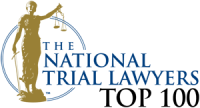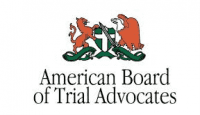Determining Fault in a Changing Lanes Car Accident in Texas

While many roads in Texas are remarkably open and allow drivers greater room and freedom to operate, traffic tends to get more congested on the highway in major cities like Houston. The Northwest Freeway (U.S. Route 290 or U.S. 290), Katy Freeway (Interstate 10 or I-10), and the Sam Houston Tollway (Beltway 8 or BW8) are just three examples of the larger multi-lane highways that see heavy traffic—and thus, frequent lane change car accidents.
Who is at Fault for a Changing Lanes Car Accident in Texas?
Lane change accidents occur because drivers fail to signal their intentions or fail to check their blind spots to be sure a lane is clear. It’s common for drivers involved in lane change accidents to blame the other driver. Assigning fault in a lane change accident involves determining which driver had the right of way.
One of the most common types of collisions people are involved in is crashes caused by improper lane changes. Lane change accidents can be challenging claims for people to file because it is not uncommon for both drivers involved in these types of accidents to claim the other was at fault.
If you were recently injured in any kind of lane change crash in the Houston area, it is in your best interest to quickly contact Fleming Law. Our firm can review your case and help you understand all of your legal options as soon as you call us or contact us online to receive a free consultation.
Texas Laws on Changing Lanes
Texas law requires drivers to signal before changing lanes. One of the most common reasons for changing lanes is to pass another vehicle. Texas also establishes laws about passing.
A driver passing another vehicle must pass on the left and cannot move back to the right until it is clear to do so. The driver being passed by another vehicle is supposed to move or remain to the right in favor of the passing vehicle and cannot accelerate until the passing vehicle has completely passed.
Additionally, a driver is not allowed to drive on the wrong side of the road (left of the center) while passing unless state law specifically allows this. If legal, you may only pass on the wrong side of the road if it is visible, clear, and safe to do so – no other cars are approaching and you will have time to pass safely. A driver passing another vehicle must return to the correct side of the road if another vehicle is approaching or otherwise as soon as possible.
All drivers must obey the directions of a sign or marking if it is in place and clearly visible to an ordinarily observant person. A motorist cannot pass on the wrong side of the road in a no-passing zone. Similarly, a motorist cannot drive to the left side of the roadway if they are:
- Approaching within 100 feet of a railroad crossing or intersection
- Approaching within 100 feet of a bridge, viaduct, or tunnel
- Waiting for a ferry operated by the Texas Transportation Commission
These limitations do not apply on one-way roadways or to drivers turning left into or from an alley, private road, or driveway.
Passing to the right is much rarer, and generally discouraged. A driver can pass to the right of another vehicle only if it is safe to do so, if the vehicle is about to make a left turn, and if the driver is on an unobstructed roadway with enough space to pass.
While driving on the right shoulder is usually prohibited, there are certain occasions when it is allowed. A motorist can travel on the shoulder if necessary and safe in order to stop, merge into moving traffic, make a right turn, pass a slowing or stopped vehicle, allow another vehicle to pass, obey instructions from a traffic-control device, or avoid a collision.
A motorist can drive on the left shoulder only in order to stop, avoid a collision, or obey a traffic-control device. These limitations to driving on the shoulder do not apply to emergency vehicles, police, or bicycles.
Causes of Lane Change Accidents in Texas
Most lane change crashes are the result of some violation of one of the laws described above. Some of the most common reasons that lane change collisions occur include:
- Failure to perform a “shoulder check” to check blind spots
- Attempting to change multiple lanes
- Drifting into another lane because of cell phone use or other distractions
- Failure to signal
- Driving while intoxicated (DWI)
- Driver fatigue
In some cases, the police officer responding to the crash may issue a citation to the driver who fails to maintain their lane.
Why Determining Fault Matters
With lane change crashes, disputes about who was actually at fault are common. For example, if one driver failed to signal before changing lanes, and the other driver was speeding, it may be unclear who is ultimately at fault for a resulting collision. As a result, insurance companies for both drivers are very likely to argue that the other driver was entirely at fault.
In general, determining fault is important because the driver who is ultimately found to be at fault is then responsible for all victims’ damages, including medical bills, lost wages, and pain and suffering. The more at fault the other driver is found to be, the more money you may be able to collect.
An experienced attorney will conduct an independent investigation of the crash to help secure the evidence necessary to prove the other driver was at fault in these types of cases. This investigation may involve speaking with law enforcement, interviewing witnesses, and even reconstructing the accident. Allowing a lawyer to do this for you could increase the likelihood of the other party being found at fault. A lawyer can also ensure that you don’t do or say anything to cast blame on yourself, compromising your case.
Shared Fault in a Car Accident Claim
It is not out of the question for a police officer to issue tickets to both drivers involved in a lane change accident. For example, one driver may be cited for failure to maintain their lane, but the other driver could receive a citation for speeding.
A certain degree of shared fault is not entirely out of the question in lane change crashes, but victims in Texas can still recover compensation so long as they were not primarily at fault for causing the collision. Texas is a modified comparative fault state, which means that an accident victim will have their damages reduced by their portion of fault.
Under this system, a driver who is awarded $100,000 but is found to be 20 percent at fault would have their award reduced by $20,000 and would ultimately receive $80,000. If a driver is more than 50 percent at fault, they cannot recover any damages.
The Importance of the Police Report
The Texas crash report that is filed by the responding officer can go a long way in determining the liable party for a lane change crash. Insurance companies will request a copy of the crash report and may rely on it heavily when determining fault.
Accident reports not only include any citations that were issued as a result of an accident (which may be used to demonstrate negligence), but they also include the investigator’s written narrative about what occurred, and possibly diagrams of the incident.
Texas crash reports can often be difficult for victims to decipher because they are handwritten by investigators. Fleming Law can help you obtain an accident report and identify the most beneficial information contained in it.
Contact Us Now for Help After a Lane Change Accident in Texas
If you have been injured in a lane change accident in Texas, Fleming Law can help. We are a top-rated firm with experience winning cases all the way at the Supreme Court. We understand personal injury, so we will understand your case.
We will do everything possible to win your case for you. We will investigate your accident, call in experts, compile evidence, negotiate with insurance adjusters, collect all the necessary evidence, file all required paperwork, fight for the full amount of compensation you are owed in negotiations or court, and keep you informed, relaxed, and taken care of throughout the entire process. Call us or contact us online to have our Houston auto accident attorneys provide a complete evaluation of your case during a free consultation.

Brendan received his JD from South Texas College of Law and his MBA from Baylor University. He then began his legal career as in-house counsel for a publicly-traded company, advising on matters such as mergers and acquisitions, securities, compliance, and general corporate transactions. He then worked at a national law firm in which he represented commercial banks, private equity firms, and business owners in complex transactions before joining Fleming Law, Brendan uses his considerable knowledge of business-related matters by working on cases involving business law, real estate law, and contracts. Connect with me on LinkedIn








